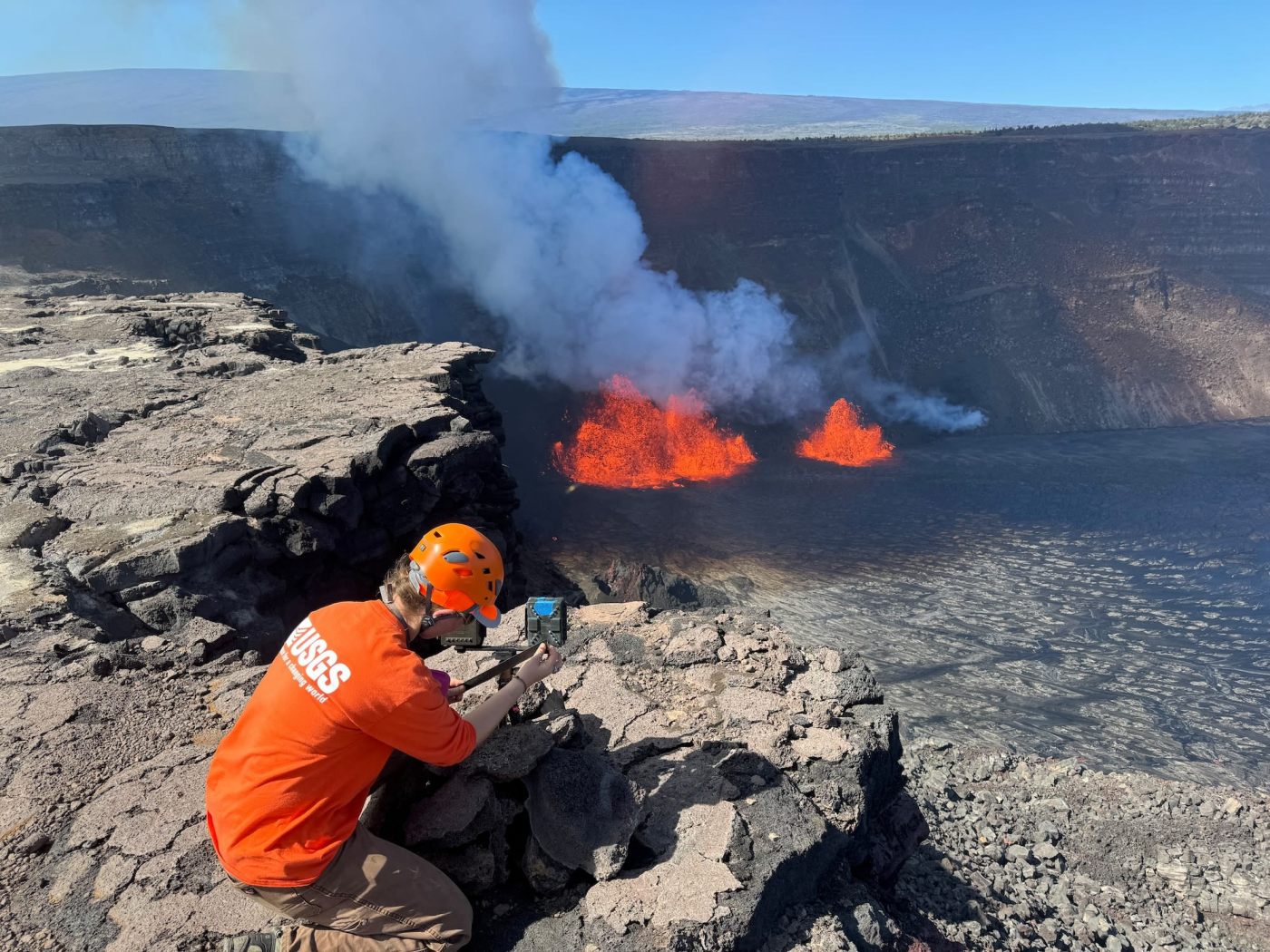Sometime between today and 200 years from now, scientists say “the big one” will hit the United States.
There is danger lurking on the sea floor off the Pacific Northwest’s coast: After centuries of two tectonic plates pushing up against each other, the Cascadia subduction zone that runs from Northern California all the way up to British Columbia is due to rupture — possibly in our lifetimes.
RELATED: 45th anniversary: A look back at the eruption of Mount St. Helens
“We know that we have the potential for a really massive scale earthquake, the largest we’ve ever seen on the planet,” said Harold Tobin, a professor at the University of Washington and director of the Pacific Northwest Seismic Network. “We know that the Pacific Northwest has that possibility.”
Related Articles
Watch: During Monday’s quake, elephants form ‘alert circle’ at San Diego Safari Park
Magnitude 5.2 earthquake jolts Southern California
Magnitude 3.1 earthquake rattles Hollister area
Magnitude 3.0 earthquake jolts East Bay
3.2 magnitude earthquake reported off Southern California coast
The resulting earthquake could be a devastating magnitude 9.0, and the subsequent tsunami could be 100 feet high, overwhelming coastal cities and towns. Around 13,800 people could die and more than 100,000 others could be injured, the Federal Emergency Management Agency has estimated.
In short, it could be the worst natural disaster the United States has seen in modern times. And many scientists say we are less prepared for it than ever before. The league of experts and scientists who have spent decades keeping watch — the guardians at the gate — is being decimated by the Trump administration’s staffing cuts.
It’s not just earthquakes and tsunamis; experts who sound the alarm for volcano eruptions say the cuts will be felt most when there’s a crisis. The scientists who watch the sun for invisible-yet-crippling solar storms are not just losing staff; they face being moved into an entirely different agency.
A spokesperson for US Geological Survey, the federal agency tasked with monitoring earthquakes and volcanoes, declined to comment on personnel matters in a statement to CNN, but added it “remains committed to its congressional mandate as the science arm of the Department of the Interior.” The National Oceanic and Atmospheric Administration, which oversees tsunamis and solar storms, did not return a request for comment from CNN.
In addition, new spending restrictions for some federal agencies are creating extra hoops for scientists to jump through to fix earthquake seismographs and deep ocean sensors that capture how fast tsunami waves are traveling, four separate people with knowledge of the situation told CNN. The same goes for equipment that monitors earth tremors before volcanoes erupt.
“We are already underprepared for these events,” said Corina Allen, the former tsunami program leader at the National Weather Service’s Marine Weather Program. Allen was recently fired from her position, like thousands of other probationary federal employees who had been on the job less than a year.
“Being able to detect forecast and alert people of an incoming tsunami will save hundreds, if not hundreds of thousands of lives,” Allen added. “That is the impact. That is the risk we face by reducing the capability to do this work at NOAA.”
Here’s more on four major earth hazards that experts are warning will get tougher to plan for due to staffing cuts and funding restrictions.
Earthquakes
A network of roughly 800 seismographs in the West is the first line of defense against “the big one.” It senses shaking and movement deep underground, alerting scientists when tremors occur.
“Many of (the sensors) have to be in remote locations,” Tobin said. “Up on mountaintop, the back end of a logging road. It’s pretty rugged terrain. And every one of them needs maintenance one way or another.”
Teams of scientists from the USGS typically go out every summer to fix broken instruments or dig them out of deep snow. It’s gotten more difficult after federal workers there and at other agencies were told they could spend no more than $1 on any single expense, making that critical task increasingly difficult.
There are loopholes to the limit, but getting travel approved has become onerous, and a culture of fear is spreading through the agency, a person familiar with the matter told CNN, creating more of a barrier to getting the work done.
Tobin, who along with USGS oversees the ShakeAlert early warning system for major earthquakes, is particularly worried about what could happen if Trump’s budget passes without funding for the program.
“We wouldn’t be able to have the staff we have right now without that funding,” Tobin said. “All by itself, it represents something like 50% of my budget.”
Without enough staff or funding for maintenance to support the ShakeAlert system, “it wouldn’t shut off on day one, but I don’t know how long it would sustain,” Tobin said.
Forecasters monitor satellite feeds and other data at the federal Space Weather Prediction Center in Boulder, Colorado, in May 2024.(Trevor Hughes/USA Today Network/Imagn Images via CNN Newsource)
Tsunamis
Tsunamis are deadly disasters that can emerge from an earthquake in the ocean — giant waves that push far inland, inundating miles of normally dry land.
Similar to the seismographs scattered along the West coast, the National Oceanic and Atmospheric Administration keeps a network of sensors deep in the ocean, designed to alert scientists when a tsunami wave rolls through.
NOAA’s two tsunami warning centers and the National Weather Service program working to modernize their outdated software systems have been hit with probationary firings and several staffers taking the so-called “buyouts,” according to Corina Allen, who used to work as the tsunami program manager at NWS.
The 24/7 monitoring centers were already thinly staffed, Allen said, and the further reductions are deeply concerning, especially given the threat of an earthquake and tsunami in the Pacific Northwest.
“These programs are already at the bare bones,” Allen said. “They’ve been reduced; they’ve been cut. The vacancies haven’t been filled.”
At the time she was fired, Allen was tasked with modernizing the tsunami warning program’s software to integrate it more seamlessly into the alerts system used by the National Weather Service — a critical upgrade to help get alerts out to communities faster.
“These staff cuts and the potential budget cuts make the United States more at risk for a tsunami and earthquake, and they will have devastating impacts for coastal populations and the US economy,” Allen said.
Volcanoes
The Kilauea volcano in Hawaii has been erupting on and off since last year – spewing lava and ash. USGS, which monitors volcanoes in addition to earthquakes, predicts more eruptions to come, according to its website. Its scientists are also closely watching Great Sitkin, a volcano in Alaska’s islands that has been slowly spewing lava since it began erupting in 2021. Another volcano that’s actively being monitored right now is Alaska’s Mt. Spurr, where small volcanic earthquakes have been recently detected.
There are two main USGS offices monitoring volcano activity – one in Hawaii and the other in Alaska. Some USGS volcano scientists have taken the deferred resignation program, according to Jeff Freymueller, a professor at Michigan State University who used to work at the Alaska Volcano Observatory and who remains in touch with the remaining USGS staff.
The volcano observatories are monitored 24/7, and if there is a big volcanic eruption, it turns into an all-hands-on-deck situation.
“The staffing shortages will be made much, much worse when there’s a volcanic crisis, because you simply need to bring everybody on board to cover the workload,” Freymueller said.
For now, data is continuing to flow. But Freymueller is watching to see if seismograph maintenance happens this summer. He says, “they’re hoping that there’s been enough blood to appease the higher ups so that there won’t be further” staff cuts.
Solar storms
While many of the biggest hazards that take constant monitoring happen on earth, there are others in the cosmos. Particularly, from our sun.
Solar storms happen when the sun flings plasma and other charged particles carrying the sun’s magnetic field toward Earth. The resulting storms, which are otherwise invisible to the naked eye, can create awe-inspiring auroras, but can wreak havoc on our electric grids and radio systems. And these kinds of storms have been happening more because the sun is in a particularly active phase.
There are roughly a dozen experts who work at NOAA’s Space Weather Prediction Center in Boulder, Colorado, with generally two scientists on any given 24-hour shift. They have recently lost three employees, according to Tim Keebler, a space weather researcher at the University of Michigan.
“They’re wildly understaffed for a small team,” Keebler said.
More big changes could be coming to the program, which is one of just a handful like it in the world. The Trump administration has proposed moving it from NOAA to the Department of Homeland Security.
The program is preparing to launch a new satellite to better measure and predict space weather, but so much uncertainty could threaten the future of a small but important program.
“Many, many people rely on these few people at this one office,” Keebler said. “It’s the power companies, it’s the satellite operators, cell phone operators, railroad companies.”
The-CNN-Wire
& © 2025 Cable News Network, Inc., a Warner Bros. Discovery Company. All rights reserved.





